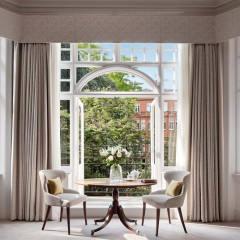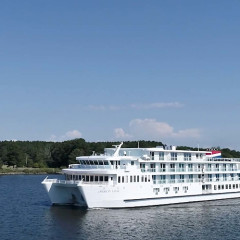Kyoto, Japan
If what you’re looking for is a meditative solo trip, then Kyoto, with its 1600 temples—each so nuanced in its peacefulness—and many ryokans (quaint inns with hot spring baths) does the trick. The most recognizable temple is Fushimi Inari-taisha, with its undulating vermillion gates. (Pro tip: Go early in the morning, when it’s most crowd-free—especially in the summer months when walking up the mountain trails can be rigorous.) Public transportation is clean, safe, easy to figure out, and always on time, which streamlines all that temple-hopping. In Japan, shrines often have calligraphers at the entrance who mark blank, back-to-front Japanese-style notebooks with that temple’s symbol; definitely buy one and fill it up as a sort of spiritual autograph book/souvenir.
As satisfying as a Japanese convenience store egg salad sandwiches is, in Kyoto, you should consider shelling out for kaiseki, multi-course dinner in which hyper-seasonal food is presented as an art form. Miyamasou and Hyotei have Michelin stars and tranquil scenery, but it’s difficult to find a sub-par dining experience here.
For a less august sampling of Kyoto fare, head to the five-block–long Nishiki Market and photograph away. Order a drink—and watch the bartender take his cool time making it, because it will be worth the wait—at the barely-lit Sfera Bar Satonaka, on the top floor of the architect-lauded Sfera building—also home to a home goods store, art gallery, and music shop. Since Kyoto is landlocked, Kyoto-style sushi leans on cured fish and grilled fish; you’ll find it at its most traditional at Izuju—where the square pieces tightly packed into boxes almost look like candy.


.jpg)
.jpg)



.jpg)
.jpg)
.jpg)




